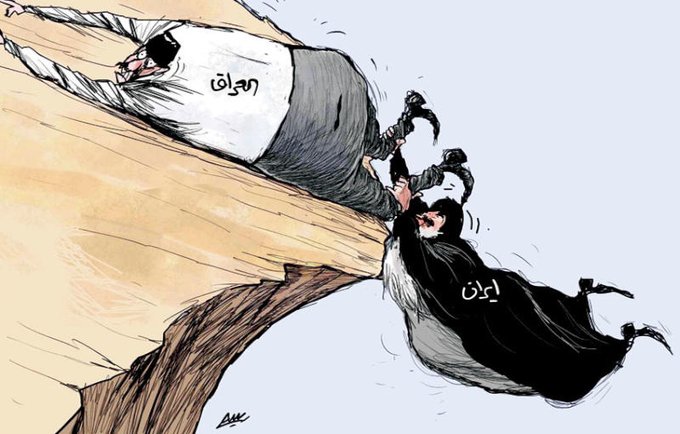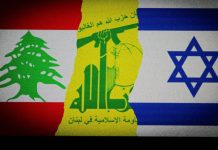Iran: Why the Old Recipe Does Not Work
Amir Taheri/Asharq Al-Awsat/January 17/2020
إيران: لماذا لم تنفع الوصفة القديمة؟
أمير طاهري/الشرق الأوسط/17 كانون الثاني/2020
مهما حاولت طبقة رجال الدين الحاكمة في إيران تزيين الأحداث الجارية في البلاد وطرحها في إطار إيجابي، يبقى الأمر الواضح للعيان أن: جمهوريتهم الإسلامية ليست في «مأزق» فحسب؛ وإنما في «مأزق عميق».
وبطبيعة الحال؛ ليست هذه المرة الأولى التي يواجه فيها النظام؛ الذي جرى تشكيله على عجل على أيدي مجموعة من الملالي وأنصارهم اليساريين، عقبة في طريقه نحو المجهول؛ ذلك أنه حتى خلال عامها الأول، واجهت «الجمهورية الإسلامية» حركة مظاهرات ضخمة في طهران وعدد من المدن الكبرى الأخرى، واضطرت لاستخدام القوة لسحق حركات تمرد في صفوف الأكراد والتركمان داخل إيران. وتبعاً لأفضل التقديرات المتاحة، فإنه كي تضمن بقاءها، أعدمت «الجمهورية الإسلامية» أكثر من 15 ألف شخص، ودفعت بأكثر من 8 ملايين إيراني نحو المنفى، ناهيك بحرب الأعوام الثمانية التي أشعلها آية الله الخميني مع العراق في ظل قيادة صدام حسين. ورغم كل هذا، فإن النظام نجح في البقاء بفضل عدد من العوامل. كان أول هذه العوامل امتلاك الجمهورية الإسلامية قدراً ضخماً من النقد من عائدات صادرات النفط. ونتيجة الارتفاع المستمر في أسعار النفط، حصدت الجمهورية الإسلامية على مدار الأعوام الـ30 الأولى من تاريخها ما يفوق ما حصلت عليه إيران منذ أن بدأت التنقيب عن النفط عام 1908 بمقدار يتجاوز 20 ضعفاً. وبفضل هذا المصدر المتاح للنقد، لم يجد حكام إيران الجدد أنفسهم بحاجة إلى المواطنين بصفتهم مصدراً للدخل عبر الضرائب مثلما الحال في البلدان الطبيعية.
في الوقت ذاته، لم يكن الحكام الجدد بحاجة إلى المواطنين كي يفوزوا في الانتخابات، نظراً لأن المرشحين كانوا ينالون الموافقة مسبقاً. ولم تكن الحكومة بحاجة إلى مواطنين كي يعملوا على استمرار الاقتصاد، خصوصاً أن أكثر من 4 ملايين لاجئ من أفغانستان والعراق وأذربيجان التي كانت تابعة للاتحاد السوفياتي، وفّروا مصدراً ضخماً للأيدي العاملة الرخيصة.
وحول ما يتعلق بقتال المواطنين من أجل النظام، لم يكن الأخير بحاجة ملحة للمواطنين مرة أخرى نتيجة نجاحه في الاستعانة بمرتزقة من الدول المجاورة، خصوصاً أفغانستان والعراق وسوريا واليمن ولبنان.
وكانت خطط الحروب بالوكالة هي التي جعلت من الجنرال قاسم سليماني بطلاً في الجمهورية الإسلامية. في الواقع، لم يكن سليماني بحاجة إلى أي خبرة عسكرية، وإنما كل ما احتاج إليه العمل آلة لضخ المال من أجل مقاتليه العاملين بالوكالة.
إلا إن الوضع تبدل اليوم، وتضاءلت العائدات النفطية عن ذي قبل. ويأمل النظام الإيراني في الحصول على نحو 60 مليار دولار سنوياً لتغطية نفقاته الأساسية. أما الاحتياطي الحالي المخصص للحرب، والذي جرى بناؤه على مدار سنوات عدة، فلن يتمكن من تغطية تلك النفقات الأساسية لأكثر من عام من الآن.
وتمثل عنصر آخر مهم في استراتيجية النظام الإيراني في ثقته بأنه مهما فعل في الداخل أو الخارج، فإن الدول الأخرى ستتحاشى دوماً اتخاذ إجراءات قوية ضده، وستفضل الحوار والتوصل إلى تسوية. إلا إنه اليوم بدأ هذا الخيار هو الآخر في التلاشي. وأشك في أنه حتى الأوروبيون الذين لطالما كانوا ضعاف القلوب في تعاملهم مع الملالي، سيرضون اليوم بمجرد ابتسامة ودّية ووعد بسلوك حسن مستقبلاً من طهران. وربما لا يزال الأمل يداعب الرئيس حسن روحاني ومن يطلق عليهم «فتية نيويورك» المحيطين به، في أن يصل مرشح عن الحزب الديمقراطي إلى البيت الأبيض قريباً. لكن حتى لو حدث ذلك، فإنني أشك في أن أي رئيس أميركي في المستقبل سيكرر الأخطاء التي اقترفها باراك أوباما.
حتى قوة براغماتية مثل روسيا لم تَعُد تبدو على استعداد لخوض اللعبة تبعاً للقواعد التي صاغها الملالي. في الواقع، التجاهل الكامل من جانب الملالي للقوانين والأعراف الدولية للسلوك، والذي تجلى على نحو مأساوي في إسقاط طائرة الركاب الأوكرانية في طهران، يجعل من الصعب حتى على ألدّ أعداء أميركا في الغرب وغيره الاستمرار في طرح الأعذار والمبررات لنظام فاسد وقاسٍ ويفتقر إلى الكفاءة.
ودارت الخطوة التالية في سيناريو الملالي حول تصوير أنفسهم على أنهم أشخاص وطنيون، ومطالبة الإيرانيين بغفران الهفوات التي يقعون فيها باسم الوطنية الخالصة. الملاحظ أن معاون روحاني المقرب، جواد ظريف والذي يتقلد منصب وزير الخارجية، كثيراً ما يتحدث عن «حضارة إيران الممتدة لـ7 آلاف عام» ويدّعي أنه «كنّا سادة العالم قبل أن يظهر الأميركيون على الخريطة». ومع ذلك، يبدو أن هذه الحيلة لم تفلح هي الأخرى، ذلك أن غالبية الإيرانيين، بمن فيهم كثير ممن يسوّقون المبررات للنظام داخل الغرب، يدركون جيداً أن الآيديولوجيا الجوهرية التي يقوم عليها النظام (الخمينية) تحمل في طياتها كراهية عميقة لكل ما هو إيراني. والملاحظ أن محاولة الملالي الأخيرة لتسويق الجنرال سليماني على أنه بطل إيراني، وأيقونة قومية، أثبتت فشلها مع إقدام متظاهرين إيرانيين على تمزيق صوره. الحقيقة أن سليماني كان مجرد آلة لتوزيع المال؛ لم يفكر يوماً في أن يطلب من الإيرانيين الإذن في إنفاق أموالهم بالخارج. ولم تجرِ مناقشة الخطط التي كان يتولى الإشراف على تنفيذها في أي مكان، ولا حتى داخل المؤسسات التابعة للنظام ذاته، ناهيك بأي منتدى عام. كما أنه لم يكن مسؤولاً أمام أي شخص سوى «المرشد الأعلى» علي خامنئي الذي، تبعاً لما ورد في المقابلة الصحافية الوحيدة التي أجراها سليماني، لم يعبأ يوماً بالخوض في أي تفاصيل.
ويدور ملمح آخر في سيناريو البقاء الذي ينتهجه النظام في إثارة آمال كاذبة من خلال الدفع بشخصيات يفترض أنها «إصلاحية» وقادرة على أن تضع على وجهها ابتسامة بدلاً من الوجه العابس للنظام، وذلك لإرضاء بعض الإيرانيين وكثير من الأجانب السذج.
ومع ذلك، أصبح من الصعب اليوم تكرار هذه الخدعة، خصوصاً أن المزيد والمزيد من الفاعلين داخل لعبة «السعي وراء الإصلاح» أدركوا أنه يجري التلاعب بهم لكسب مزيد من الوقت فحسب. وعندما أخفقت جميع الخيارات الأخرى، أدرك الملالي أن بإمكانهم التشبث بالسلطة من خلال تنفيذ عمليات قتل وإلقاء قبض واسعة النطاق. وفي كل مرة استغلوا فيها هذه الحيلة، نجحوا في كسب بضع سنوات إضافية. إلا إن الأمر قد يكون مختلفاً هذه المرة.
يذكر أن الموجة الحالية من المظاهرات اشتعلت في غضون أيام قليلة من سحق الانتفاضة الوطنية السابقة. وبدت الجولة السابقة من المظاهرات منقسمة بين المطالبة بتغيير في النظام، والمطالبة بإجراء تغييرات شكلية؛ بينها استقالة عدد من كبار المسؤولين. ومع هذا، تركز المظاهرات الأخيرة بوضوح على المطالبة بتغيير النظام، حتى من جانب بعض «الساعين نحو الإصلاح» سابقاً. ويعني كل ذلك أن الوصفة الكلاسيكية للبقاء التي ينتهجها النظام لم تعد فاعلة؛ على خلاف ما كانت عليه سابقاً. وللمرة الأولى، بدأت أعداد متزايدة من الإيرانيين في النظر إلى تغيير النظام على أنه ليس فقط شعاراً مرغوباً، وإنما كذلك استراتيجية عملية لإنقاذ البلاد من المأزق الذي صنعته الخمينية.
Iran: Why the Old Recipe Does Not Work
Amir Taheri/Asharq Al-Awsat/January 17/2020
No matter what gloss the ruling clerics might try to put on current events in Iran, one point is clear: their Islamic Republic is in trouble. Deep trouble.
This is, of course, not the first time that the system hastily put together by a bunch of mullahs and their leftist allies hits a bump on its road to nowhere. Even in its first year the Islamic Republic faced huge protest movements in Tehran and other major cities and had to use force to crush rebellions by Iranian-Kurdish and Turcoman communities.
According to best estimates, to remain in place the Islamic Republic has executed more than 15,000 people and driven more than 8 million Iranians into exile. And all that not to mention the eight-year war that the late Ayatollah, Ruhallah Khomeini, provoked with Iraq under Saddam Hussein. Despite all that the regime managed to survive thanks to a number of factors.
The first of those was that the Islamic Republic had at its disposal a large amount of cash earned from oil exports. The steady rise in oil prices meant that in its first 30 years of existence the Islamic Republic earned more than 20 times the money that Iran had made ever since it started exporting oil in 1908.
That ready source of cash meant that the new rulers of Iran did not need the citizenship for any of the ordinary things citizens in normal countries are needed for. The government did not depend on the people for revenue through taxation.
At the same time, it did not need citizens to win elections as candidates were approved beforehand. Nor did the government need the citizens to work to keep the economy going. Over four million refugees from Afghanistan, Iraq and former Soviet Azerbaijan provided a huge source of cheap labor.
When it came to needing citizens to fight for the regime, citizens were again not indispensable as the regime succeeded in hiring mercenaries in a number of neighboring countries, notably Afghanistan, Iraq, Syria, Yemen and Lebanon.
It was that scheme of proxy wars that turned the late General, Qassem Soleimani, into a hero of the Islamic Republic. In fact, Soleimani did not need any military expertise. All he needed to do was to act as a cash machine for his proxy warriors.
Today, however, the oil cow is giving the mullahs much less milk than before. In fact, the regime’s hope is to secure something around 60 billion US dollars a year to cover its basic expenses. The existing war chest, built over the years, won’t cover those basic expenses for more than a year from now.
The other important element in the regime’s strategy was certainly that, whatever it did at home or abroad, its putative floes would always shy away from taking strong action against it, preferring dialogue and compromise.
Tehran always knew that whatever it did against outside powers it always had the option of surrendering at five minutes to midnight. Today, that option is also fading. I doubt that even the lily livered Europeans would now settle for just a friendly smile and a promise of future good behavior from Tehran. President Hassan Rouhani and his “New York Boys” may still hope to see a US Democrat in the White House soon. But even if that happens, I doubt that any future US president would repeat the mistakes made by Barack Obama.
Even an opportunist power like Russia is no longer prepared to play the game according to the rules fixed by the mullahs. The mullahs’ total disregard for international law and norms of behavior, tragically demonstrated with the shooting down of the Ukrainian jetliner in Tehran makes it hard for even dyed-in-wool anti-Americans in the West and elsewhere to continue as apologists for an incompetent, corrupt and cruel regime.
The next item in the mullahs’ scenario was to wrap themselves in patriotic colors and demand that Iranians forgive their peccadillos in the name of raw nationalism. Rouhani’s closest associate Muhammad Javad Zarif, acting as foreign minister, often uses tropes as “Iran’s 7,000-year civilization” and claims that “we were masters of the world long before Americans appeared on the map. However, that trick isn’t working either. Most Iranians, including many regime apologists in the West, know that the regime’s core ideology, Khomeinism, is built on a profound hatred of all things Iranian.
The mullahs’ recent attempt at marketing Gen. Soleimani as an Iranian hero, a kind of nationalist icon, has proved a failure as posters lamenting his demise are torn down and/or effaced by protesters in the country.
Soleimani was a cash dispensing machine that never asked Iranians for permission to spend their money abroad. The scheme he ran was never discussed anywhere, even in the regime’s own institutions, let alone any public forum. Nor was he answerable to anyone but “Supreme Guide” Ali Khamenei who, if Soleimani’s only press interview is believed, never bothered to go into any details.
Another feature of the regime’s survival scenario was to foment false hopes by fielding supposedly “reformist” figures capable of replacing the regime’s frown with a smile to please some Iranians and many gullible foreigners. Today, however, that trick is also hard to repeat, especially as more and more players in the “reform-seeking” game realize that they have been taken for a ride.
When everything else failed the mullahs knew that they could hang on to power by mass killings and widespread arrests. Each time they used that trick they managed to buy a few more years. This time, however, may be different. The current wave of protests was launched just days after the crushing of the previous national uprising. The previous round of protests seemed divided between a demand for straight regime change or demand for cosmetic moves, including resignation of top officials.
The latest protests, however, are clearly focused on a demand for regime change, even by some former “reform-seekers”. All this means that the regime’s classical recipe for survival isn’t working as before. For the first time, more and more Iranians are beginning to contemplate regime change not as merely a desirable slogan but as a practical strategy to lead the nation out of the impasse created by Khomeinism.





















